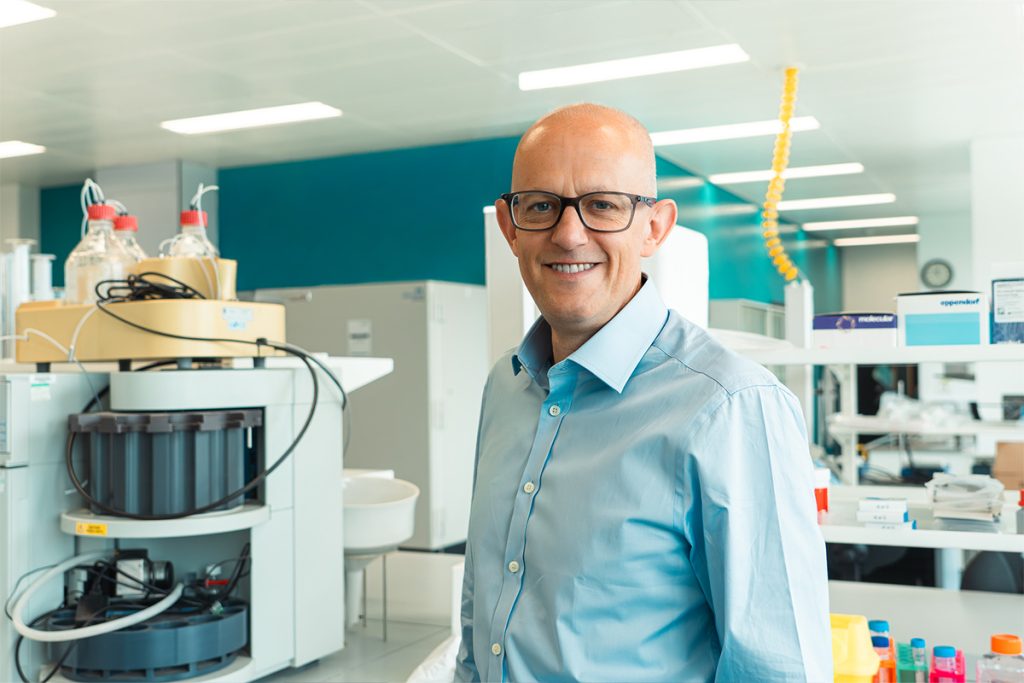
FDA approval of Stealth’s mitochondria-targeted therapy could pave the way for a host of longevity biotech companies.
The recent FDA approval of Stealth BioTherapeutics’ Forzinity was a milestone moment in biotech, with potentially significant implications for longevity. Not only did Stealth become the first company to bring to market an approved treatment for the rare genetic condition Barth syndrome, it also became the first to gain FDA approval for a mitochondria-targeted therapy.
The accelerated approval of Forzinity is the first formal acknowledgment by the regulator that modifying mitochondrial biology has direct therapeutic relevance in a human disease, and is a pivotal moment for the mitochondrial medicine field. By validating the scientific and clinical rationale behind targeting mitochondrial dysfunction, the approval bodes well for other drugs that target similar cellular pathways – including therapies with healthspan-boosting potential.
Longevity.Technology: The ripple effect of the Forzinity approval will be keenly felt in the longevity biotech sector, which boasts multiple companies focused on the role of mitochondrial dysfunction in age-related diseases. Mitochondria, often described as the “powerhouse” of the cell, are impaired in many degenerative diseases, ranging from rare disorders like Barth syndrome to common conditions like heart failure, neurodegeneration and metabolic syndromes. To get some perspective on the what the news means for the longevity biotech sector, we caught up with some of the leading figures in the field.

It’s important to note that Stealth itself is already in advanced clinical programs for other conditions associated with mitochondrial dysfunction, including a fully enrolled Phase 3 clinical trial of elamipretide in dry age-related macular degeneration, a leading cause of blindness. The company is also progressing an eyedrop formulation of its “next-generation” compound, bevemipretide, which is poised to enter Phase 2 in dry AMD next year.
“We are energized by what this means for families living with Barth syndrome as well as across the wider field of diseases, including diseases of aging, in which impaired mitochondrial bioenergetics drive pathology,” Stealth CEO Reenie McCarthy told us. “By improving mitochondrial structure and function, we hope to develop therapies that not only slow disease progression but potentially restore function and improve healthspan.”
Karl Pfleger, founder of nonprofit AgingBiotech.info, told us the aging of mitochondria is “one of the most important sub-pathologies of aging.”
“Mitochondrial membrane stability is known to correlate with species lifespans,” he explained. “Elamipretide stabilizes the inner membrane and is the first FDA approved therapy to do so. Though approved for a rare disease, preclinical research suggests it’s likely to be beneficial for many age-related diseases. This is part of a pattern of positive Phase 2 and 3 clinical trial data for mechanisms of action that embody the geroscience hypothesis. Unlike the majority of traditional pharmaceuticals that target single-disease-specific biology, these new aging therapeutics are likely eventually to expand across several indications.”

Longevity biotech leaders weigh in
For other developers of mitochondrial therapeutics, Stealth Bio’s FDA approval lowers a critical barrier to entry and could also accelerate investment in the space. With a regulatory path now forged, other companies now have a tangible reference for trial design, endpoint selection, and risk management. We spoke with the leaders of some of the other companies working in the mitochondrial therapeutics field to get their thoughts on the news, and to find out where they are in their own programs.
Spring Behrouz, CEO of mitophagy-focused biotech Vincere Biosciences, told us that the approval of Forzinity felt like “watching a decades-long mission finally land on its target planet.”
“This is fantastic news for those of us heading toward the FDA with other approaches to improve mitochondrial health,” she added. “Mitochondrial dysfunction is a core driver of both disease and aging which itself is the biggest risk factor for most diseases. This milestone sets the stage for the next generation of therapies, including Vincere’s mitophagy enhancers, which will enter human trials next year.”

Formerly known as SS-31, elamipretide emerged from a line of mitochondria-targeted tetrapeptides designed to help maintain mitochondrial integrity under stress conditions tied to aging biology and disease. Research studies documented improvements in aged tissues and models, fueling interest in elamipretide as a way to counter aspects of age-related mitochondrial dysfunction and functional decline, leading to its popularity among biohackers.
“The story of SS-31 is a trip,” said Behrouz. “Biohackers called it rocket fuel for a variety of indications, but placebo-controlled randomized trials told a different story tangled in patient variability. The missing piece now is a clear biomarker for mitochondrial deficit. Find that, and suddenly the same molecule might work across a much larger group of people who have mitochondrial deficit, going well beyond the recently-approved Barth Syndrome.”
Klaus Dugi, CEO of Vandria Therapeutics concurs that Forzinity’s approval is “pioneering in the field of mitochondria-targeted therapeutics.”
“As they are the powerhouses of cells, maintaining mitochondrial health is essential to many biological processes that impact a wide spectrum of diseases for example in the CNS, muscle and liver, as well as age-related conditions,” he told us.

Vandria is developing a portfolio of therapeutics to precisely modulate a novel target that impacts biological pathways to improve mitochondrial function and reduce chronic inflammation for the treatment of age-related diseases.
“Our molecules modulate a key metabolic target in the cytosol that in tissues restores the oxidative phosphorylation pathway in mitochondrial respiration,” said Dugi. “This, in turn, induces autophagy and mitophagy, reduces protein aggregation and protects against cell death. In immune cells, this has the additional effect of also reducing the release of proinflammatory cytokines.”
Vandria’s lead program, VNA-318, is in Phase 1 trials and Dugi said the company has seen “excellent tolerability and pharmacokinetics.”
“Our next milestones at Vandria are the biomarker readout from Phase 1 then raising a Series B to fund us through trials in patients. This way, we look forward to adding to the panoply of treatments improving mitochondrial function in the future.”

Neil Miller, CEO of NRG Therapeutics said the Forzinity approval “signifies a new era of therapeutics that target specific aspects of mitochondrial biology.” The UK-based neuroscience company is targeting a novel mechanism to address mitochondrial dysfunction for the treatment of neurodegenerative diseases.
“Mitochondrial dysfunction is a key component of pathology in many neurodegenerative diseases, and we are optimistic that additional novel approaches to rectifying mitochondrial dysfunction in Parkinson’s, ALS and other diseases will follow this success story,” said Miller.
John Rees, CEO of MitoRx Therapeutics told us while it was important that rare disease patients benefit from the new wave of mitochondrial therapeutics, it was “equally important that we develop technologies that can address impairments in mitochondrial signaling that occur in obesity and diabetes.”
MitoRx is developing its lead compound Myo-004 in cardiometabolic indications, and has gathered evidence of functional muscle improvement in preclinical models as well as lean mass increase in diet-induced obesity (DIO) models.

“This DIO result was boosted further by 44% fat loss in combination with a GLP-1 drug, when it also increased lean mass,” said Rees. “During aging and also in obesity and overweight, an important mitochondrial signaling system involved in the regulation of metabolism is impaired, with MitoRx developing the first potential medicines to restore that mechanism. This expansion of the field of use of mitochondrial-targeted therapeutics by MitoRx is likely to offer a weight loss journey without lean mass loss to some of the 1 in 8 people globally now living with obesity.”
‘Impossible dream’ becomes reality
It should of course be noted that the road to Forzinity’s approval has not been easy. It took around two decades and more than $300 million in investment to get Stealth to this point.
“Adjusted for time value, that’s nearly a billion-dollar moonshot,” said Behrouz. “The fact it took that much to reach one therapy says a lot about how broken the drug discovery system still is. Credit to the Stealth team for staying the course and turning an almost impossible dream into a real-world breakthrough.”
Ultimately, the approval of Forzinity adds significant weight to the argument for targeting mitochondria therapeutically, and the hope is that it will raise the profile of mitochondrial biology across research, development and investment. This could hasten the entrance of next-generation longevity interventions, amplifying the trajectory of the entire sector and putting mitochondrial medicine at the forefront of healthspan-focused strategies. Exciting times!
The post Is this mitochondria’s big moment? appeared first on Longevity.Technology – Latest News, Opinions, Analysis and Research.


